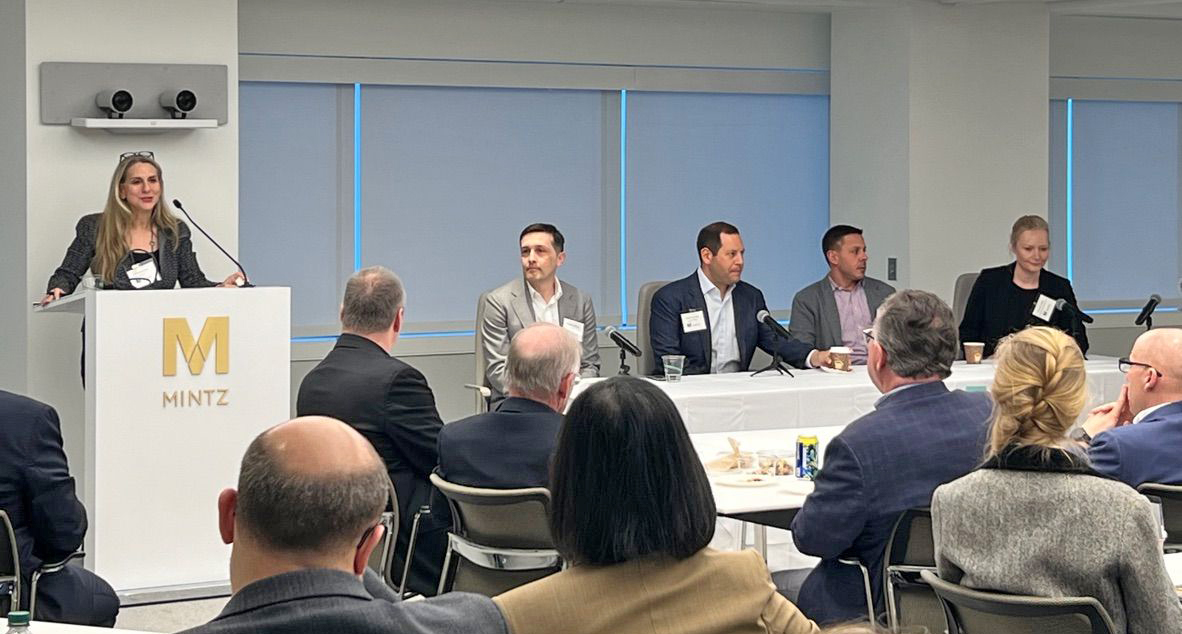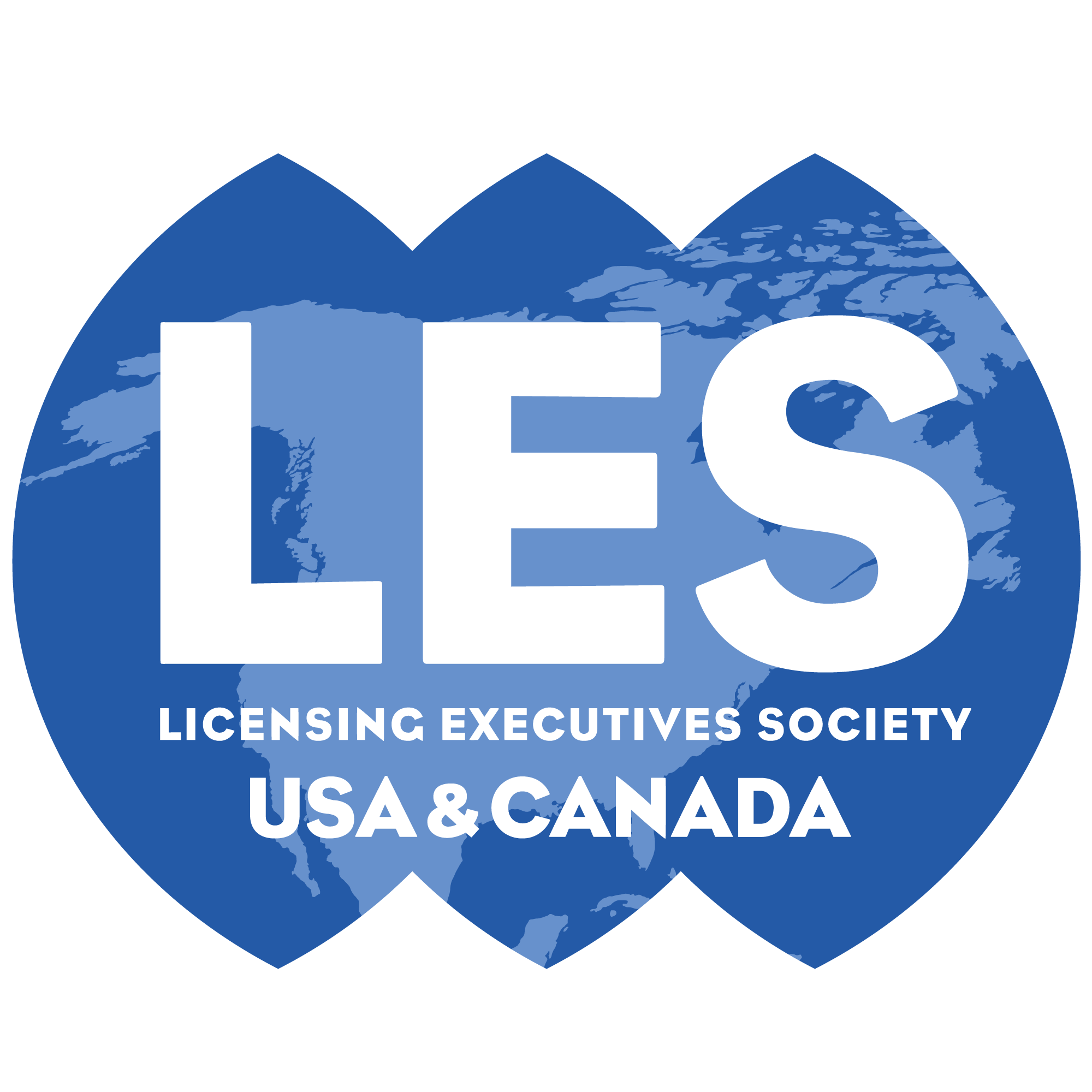Nearly one hundred life sciences professionals convened at Mintz’s Boston office last week for an event we hosted in partnership with the Licensing Executives Society (LES) Boston Chapter. I moderated a panel, “Structuring Your Life Sciences Transaction: Licensing vs. M&A vs. Asset Sale,” with business development leaders from GSK, Johnson & Johnson, Locust Walk, and Astria Therapeutics. We were fortunate to have a mix of expert perspectives at the table, representing large pharmaceutical companies, investors, and smaller companies. Below is a recap of our discussion.
Tips for accelerating the deal
We kicked things off with a question I commonly get asked by life sciences companies when doing deals with big pharma: “How can we get pharma to move faster?”
Jon Kiburz, Vice President of Business Development Transactions at GSK, acknowledged that “governance can be daunting and quite extensive at companies like GSK.” Jeff Caravella, Business Development at Johnson & Johnson, concurred: “As you can imagine, there are thousands of opportunities finding their way through the doors at some of these large pharma companies.” Andy Meyerson, Managing Director at Locust Walk, noted that “governance at all pharma companies is intense.”
While the deal process can be lengthy, deals still get done. “It’s not impossible for pharma to move quickly if it’s the right opportunity, the right data, the right time,” noted Kiburz.
Competitive tension
Caravella cited two factors that can speed up deals with big pharma. “There are two things I’ve seen from the vantage point of being outside and inside. The first is competitive tension. When there are bids on the table, things move quicker, and people make decisions a lot faster. Otherwise, there is less of a sense of urgency,” he said. Meyerson agreed that deals often accelerate when there is pressure from another interested party, “The best way to do it is competitive tension.” However, both panelists warned against misrepresenting competitive tension. “I would urge companies not to create false competitive tension,” said Caravella. “Never lie,” said Meyerson. “It’s extremely easy to figure out.”
Time of year
According to Caravella, the second-factor impacting deal speed is the time of year. “Sometimes there are deadlines, and year-end can be one. Financially, things emerge over the course of the year where there is additional favorability, or we’re able to execute something else, maybe a divestiture or something of the sort, that unlocks additional capital. These deal opportunities often happen in the second half of the year rather than the first half of the year,” said Jeff.
Advantages offered by smaller buyers
Veronica Miller, who leads business development at Astria Therapeutics, noted the advantages of working with smaller buyers or partners. “As a smaller company, we can move quicker,” Miller said. Meyerson stressed that smaller companies can sometimes be better partners than big pharma companies, depending upon the circumstances. “There are plenty of buyers that aren’t just big pharma, that are potentially better homes for assets, programs, platforms, etc.,” he said. “Sellers need to be able to think appropriately about value and what they want they want to achieve in their deal outside of M&A [Mergers & Acquisitions].”
Considering multiple business development doors
Caravella discussed a multifaceted approach to business development. “J&J has a large infrastructure around early-stage innovation ecosystem and in the later stage as well,” he said. “On the early stage, we have our J&J Venture Capital group, which is over fifty years old, so there is a large number of people scouting from that perspective. We also have an incubator network through JLABS, and a tremendous network of people that are out scouring the world through AI and a variety of other things to find and meet companies.” He encouraged companies to be patient and not get discouraged. Kiburz agreed: “We’re very proactive. It’s pretty rare we don’t know about something. You have to trust that if you generate good data and present it at relevant conferences, you are going to be found,” he said. Meyerson echoed the need for companies to be patient with the business development process, “It doesn’t mean they don’t like you; it just means they haven’t been able to get to you yet.”
Deciding between Licensing and M&A deal structures
We also discussed deal structures and the interconnectivity between licensing and M&A. I asked the panelists how they think about structuring deals: “Should I do a license? Should I do an M&A? Is a license just like an engagement before the marriage through M&A?”
Kiburz said it is a “case by case” determination but, “in general, for earlier stage assets, the preference is going to be a license structure.” He said a license structure, in general, also has “favorable tax elements.” He also noted that licenses can “flip to M&A unpredictably” due to a number of factors, including competitive pressure, the number of company assets, and other circumstances.
Miller said her company built its pipeline by in-licensing. She said they place a lot of value on what a potential partner brings to the table, including benefits beyond financial aspects, such as cultural fit.
Caravella noted that there had been circumstances at GSK when they started to seek out a licensing pathway on a particular asset, and other opportunities in the pipeline led them to think more about a company acquisition to broaden their scope.
However, Meyerson noted from his experience that “75% of all deals in biotech are licenses.”
Importance of preparation and clear communication
We wrapped up the discussion by talking about the importance of proper deal preparation and communication to increase the odds of a successful deal. Panelists stressed the importance of smaller companies sharing enough information proactively so that partners understand what they are seeking. “If you can’t articulate your goals, you are unlikely to be happy with the outcome,” said Meyerson. “Being prepared to know exactly what the value is or how you articulate that is really important,” said Caravella, who also emphasized the need to discuss expected financials earlier rather than later. “If the numbers are wildly misaligned, it may take a lot longer to bring it back up through flagpole in big pharma because you have to reset expectations against a lot of different stakeholders.” Miller commented that, in addition to understanding “the numbers,” companies must be very clear on “the why” of what they want to achieve.
I am extremely grateful to our four panelists for their time and insight. Here is a link to a short video recap of the event for those who missed it.

Cheryl Reicin of Mintz moderated a panel titled “Structuring Your Life Sciences Transaction: Licensing vs. M&A vs. Asset Sale.” She was joined by Jon Kiburz of GSK (left), Andy Meyerson of Locust Walk, Jeff Caravella of Johnson & Johnson, and Veronica Miller, PhD of Astria Therapeutics.

Get Social